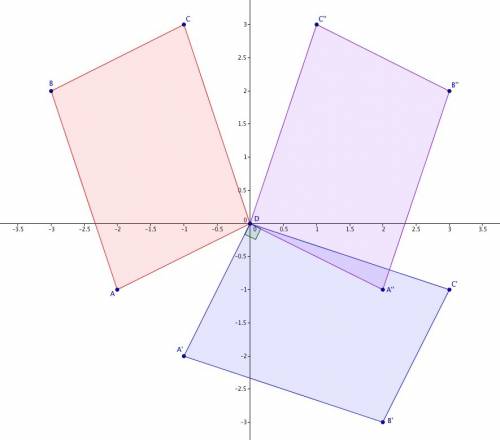
Mathematics, 08.07.2019 00:00 AldoRaine8074
The vertices a(–2, –1), b(–3, 2), c(–1, 3), and d(0, 0) form a parallelogram. the vertices a’(–1, –2), b’(2, –3), c’(3, –1), and d’(0, 0) are the image of the parallelogram after a sequence of transformations. which sequence of transformations could produce the image from the pre-image? a reflection over the x-axis and then a reflection over the y-axis a reflection over the y-axis and then a 90 degree clockwise rotation about the origin a 90 degree clockwise rotation about the origin and then a reflection over the y-axis a 90 degree counterclockwise rotation about the origin and then a reflection over the x-axis

Answers: 1


Other questions on the subject: Mathematics

Mathematics, 21.06.2019 18:00, whocares1234
How many triangles can be drawn with side lengths 4 centimeters, 4.5 centimeters, and 9 centimeters? explain
Answers: 1

Mathematics, 21.06.2019 22:00, costel8532
Which of the following graphs could represent a cubic function?
Answers: 1


Mathematics, 21.06.2019 23:30, jlopez113
The bottom of ignacio's desktop is 74.5cm from the floor. ignacios sits in his adjustable chair, and the tops of his legs are 49.3cm from the floor. each clockwise rotation of the knob on the chair raises ignacio's legs by 4.8cm. write an inequality to determine the number of clockwise rotations, r, ignacio could make with the knob without his legs touching the desk.
Answers: 3
You know the right answer?
The vertices a(–2, –1), b(–3, 2), c(–1, 3), and d(0, 0) form a parallelogram. the vertices a’(–1, –2...
Questions in other subjects:

History, 11.07.2019 10:00





English, 11.07.2019 10:00







